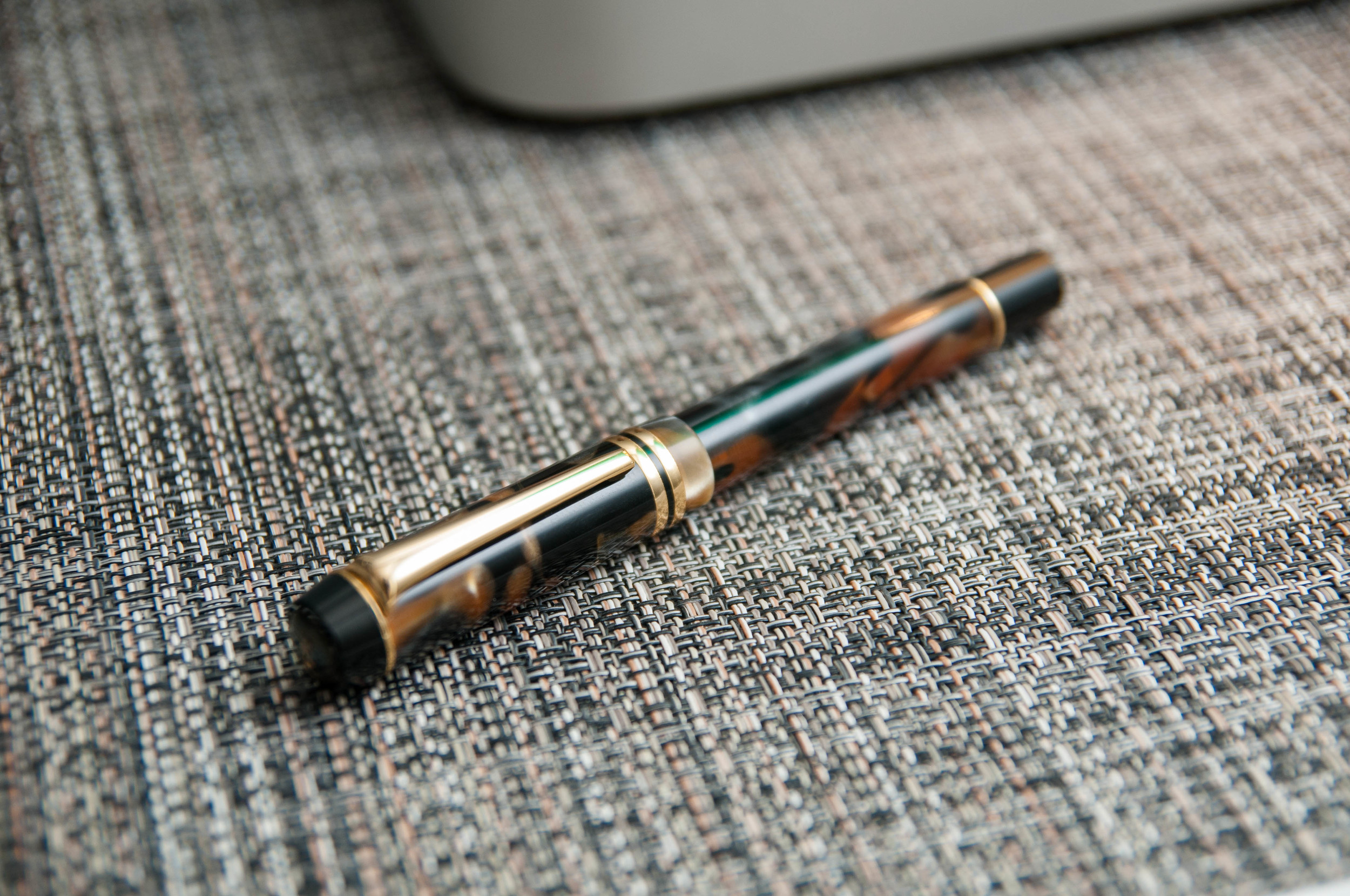Unlike a lot of people, my first fountain pen wasn't a Lamy. I didn't try one out until my third fountain pen, after a Sailor and Kaweco. My first Lamy was a Lamy Vista with a fine nib, and it's a great pen. Since then, I've bought more pens by Lamy and have been very happy with them. The Studio follows that line of customer delight.
The Studio is somewhere between the (relatively) inexpensive Safaris and AL Stars and the timeless 2000. At less than $90, it's not a scary jump into the more costly pens, and you already know if you'll like the nib since they use the same ones.
Keep in mind that I'm reviewing the steel nib version of the pen here. Brad reviewed the gold nib version a few weeks ago, which is about twice the price.
Look and feel
First things first. Personally, I think this is a really attractive pen. I love the sleek matte finish and the polished grip section and accents. I've said it before, but I really have a soft spot for aluminum bodies, and the Studio does a great job using the metal.
I've heard people complain that the grip section is slippery because it's so smooth. There's absolutely no texture to it. I don't have a problem with the way it feels. I think it's quite comfortable, but that's just me. I do get annoyed with all of the fingerprints, though. Being a polished metal, it attracts fingerprints like pen addicts to open inkwells. That's a minor annoyance that's easily solved with a quick wipe down.
My other major complaint is with the clip. It looks really nice and sports a unique design, but it fails to serve its real purpose with any ease. It's an extremely tight clip and has been difficult with every sort of object I've tried to clip it to. Whether it's my shirt pocket, a Nock case, the front cover of a Field Notes book...it resists with an ornery stubbornness. I usually have to move the clip to the side a bit to provide a tad more room for the object to slip between the clip and the cap body. Fine. I can live with that, but there's a downside to that method as well. Sliding the clip across the cap creates a mark in the matte finish. Major bummer, but not a deal-breaker. Just be aware.
Apart from those two annoyances, this is a great pen. It feels great in my hand, has a solid but useable weight, and catches quite a few compliments. The cap posts very sturdily with a satisfying click so you know it's ready.
It's sleek, black, and understated.
Writing experience
Like every other Lamy I've used, this pen writes like a champ. Excellent flow and smooth writing right out of the box. The Studio comes with a converter (unlike other Lamys in the lower price range) that holds the same amount of ink as the regular Lamy converter. The converter included is the silver and black Z26, which I'm thinking of swapping out to use in my Vista.
One issue I've had so far is that there's quite a bit of nib creep with this particular pen. I've never seen this issue with other Lamys (not as much), so I'm wondering if it has something to do with the capping system. I'm not sure what it is, but it doesn't hinder the writing experience.
I've used this pen for long writing sessions, and it doesn't create any fatigue and it remains comfortable the entire time. It's an absolute joy to write with.
If you're a Lamy fan, this is definitely a great addition to your collection. Apart from the sultry black, there's a very refined royal blue that looks equally as classy. JetPens only offer a fine and extra fine nib with the Studio, but you can swap the nib out with any Safari nib.
(You can find more from Jeff online at Draft Evolution, Twitter, and App.net.)
















